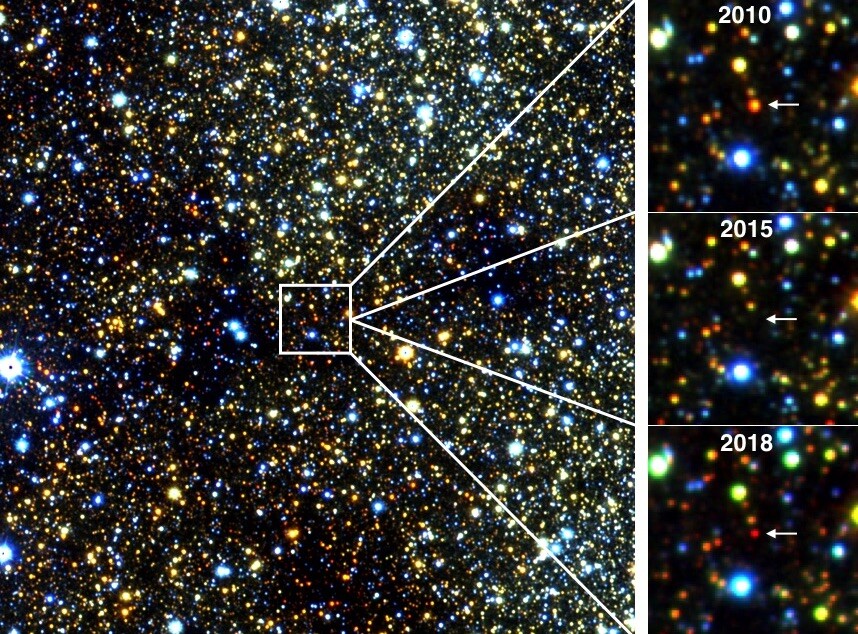“Astronomers discover a completely unknown object floating around in space” is a common news theme, but it’s fun every time. The latest is a brand new type of star – ancient red giants the team has nicknamed “Old Smokers.”
Ironically, the researchers set out to study newborn stars. To do so, they analyzed 10 years of data from the Visible and Infrared Survey Telescope (VISTA) in Chile, which watches a large patch of sky for objects that changed brightness over time. They narrowed it down to 222 objects with the most drastic brightness changes, most of which were easy to identify as known types of events. Then, they analyzed the spectra of the last ones with the Very Large Telescope.
“Our main aim was to find rarely-seen newborn stars, also called protostars, while they are undergoing a great outburst that can last for months, years, or even decades,” said Dr. Zhen Guo, an author of the study. “These outbursts happen in the slowly spinning disc of matter that is forming a new solar system. They help the newborn star in the middle to grow, but make it harder for planets to form. We don't yet understand why the discs become unstable like this.”
But during the study, the team spotted 21 strange stars near the center of our galaxy that were changing brightness in weird ways. One, for instance, was clearly visible in images taken in 2010, but by 2015 it had vanished entirely. Just three years later, it was back, albeit dimmer than before.
When they analyzed the spectra of these stars, they discovered celestial objects completely unknown to science. They seem to be a type of red giant – ancient stars that have run out of fuel and are currently in the slow process of dying. These ones, however, have the odd quirk of occasionally coughing up big clouds of gas and dust that blocks its light from view. Hence, the Old Smoker title.
“These elderly stars sit quietly for years or decades and then puff out clouds of smoke in a totally unexpected way,” said Professor Dante Minniti, an author of the study. “They look very dim and red for several years, to the point that sometimes we can't see them at all.”

Like a chain-smoking grandpa who will ramble his stories to anyone willing to listen, these crotchety old stars might still have some value to impart to the younger generation. The heavier elements in the universe are forged through multiple cycles of star birth and death, and these belched-out clouds could be a previously unknown way they spread through the cosmos.
“Matter ejected from old stars plays a key role in the life cycle of the elements, helping to form the next generation of stars and planets,” said Professor Philip Lucas, lead author of the study. “This was thought to occur mainly in a well-studied type of star called a Mira variable. However, the discovery of a new type of star that throws off matter could have wider significance for the spread of heavy elements in the Nuclear Disc and metal-rich regions of other galaxies."
The research was published in the journal Monthly Notices of the Royal Astronomical Society, [1], [2], [3], [4].
Source: Royal Astronomical Society
"type" - Google News
January 30, 2024 at 10:11AM
https://ift.tt/OSMAT0E
"Old Smokers": Astronomers discover previously unknown type of star - New Atlas
"type" - Google News
https://ift.tt/o8wPCLy
https://ift.tt/qSC2p3r
Bagikan Berita Ini














0 Response to ""Old Smokers": Astronomers discover previously unknown type of star - New Atlas"
Post a Comment